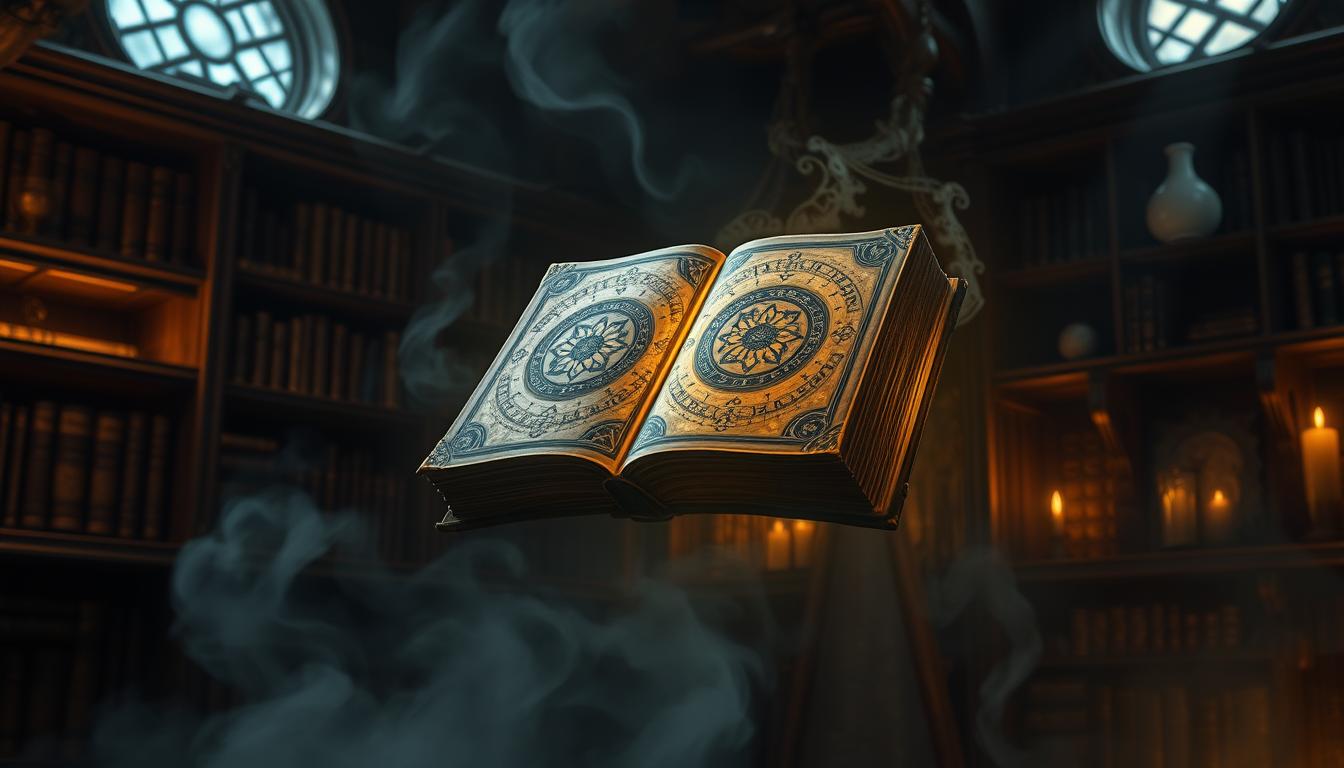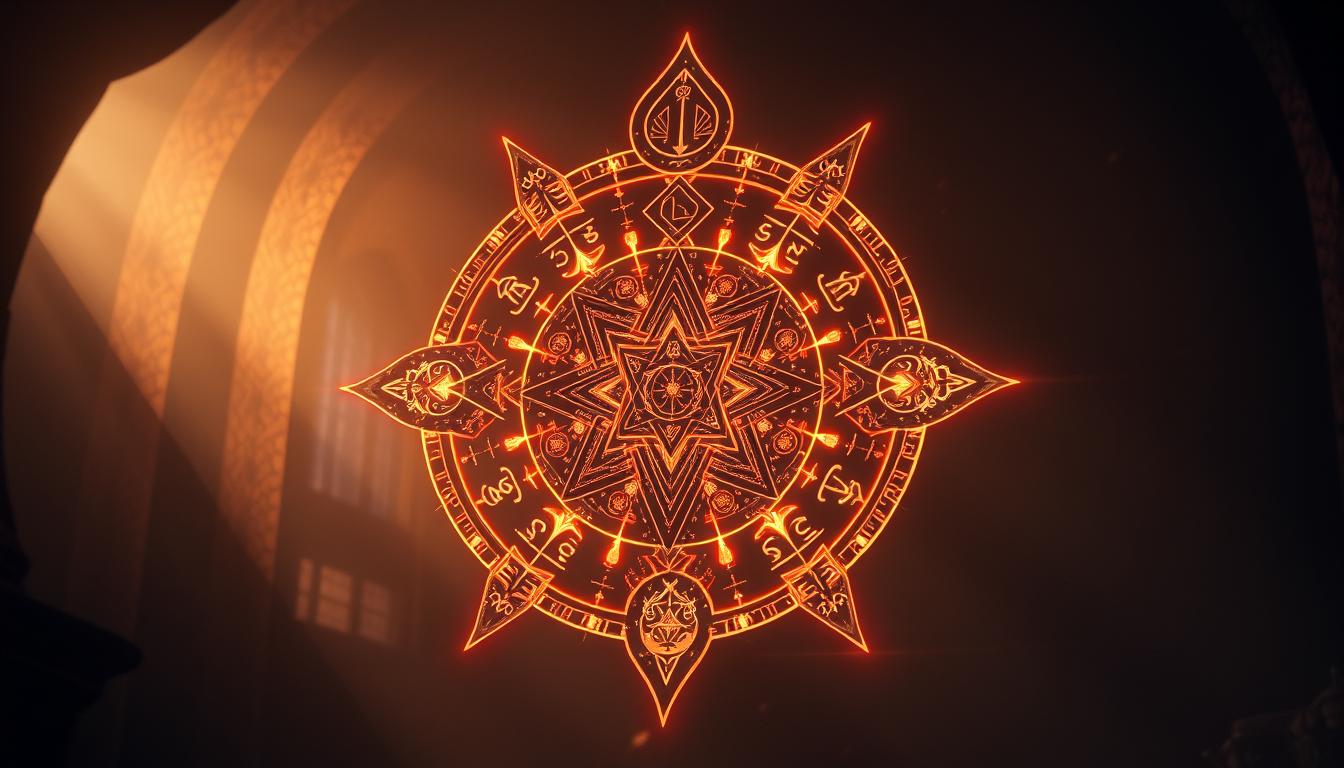Glyph of Warding 5e: Unlock the Power of This Iconic Spell
Ever wondered how a single spell can turn an ordinary dungeon into a deadly maze or protect your most prized treasures? The answer lies in one of Dungeons & Dragons’ most versatile tools—the Glyph of Warding. This 3rd-level abjuration isn’t just a defensive trick; it’s a game-changer for creative players.

I’ve used this spell to rig entire corridors with explosive runes, dealing 5d8 elemental damage to unsuspecting foes. But that’s just half its power. You can also store other spells inside, like Fireball or Hold Person, turning a simple glyph into a tactical surprise.
With a 1-hour casting time and a 200gp cost (thanks to incense and powdered diamond), it’s an investment. Yet, its permanent duration and hidden triggers make it worth every penny. Whether you’re guarding a lair or setting alignment-specific traps, the possibilities are endless.
Key Takeaways
- Versatile 3rd-level abjuration for defense and strategy
- Two effects: explosive damage or stored spells
- Requires 1 hour and 200gp in materials
- Permanent until triggered, with customizable conditions
- Perfect for lairs, treasure protection, or creative combat setups
What Is Glyph of Warding 5e?
Few spells offer both protection and offense like this one. Whether you’re rigging a doorframe to explode or hiding a Hold Monster inside a treasure chest, it’s a masterclass in preparation. Let’s break down how it works.
Spell Basics: Casting Time, Components, and Duration
This isn’t a quick-cast spell. You’ll need 1 hour and 200gp of materials (powdered diamond and incense). But once set, it lasts until triggered, making it perfect for long-term security.
Explosive Runes vs. Spell Glyph: Key Differences
You pick one effect when casting. Explosive Runes deal 5d8 damage (choose acid, cold, fire, etc.). Spell Glyph stores another spell, like Banishment, unleashing it when triggered.
Who Can Cast It? Classes and Level Requirements
Four classes access this spell: Artificer, Bard, Cleric, and Wizard. It’s unlocked at 5th level for all. Here’s how they shine:
- Artificers use tools to craft glyphs into objects seamlessly.
- Clerics pair glyphs with divination spells to monitor traps remotely.
- Multiclass? A 3-level Wizard dip gives Paladins explosive security options.
How to Customize Your Glyph of Warding
Customization is where this spell truly shines, offering endless strategic possibilities. Whether you’re guarding a vault or setting an ambush, tweaking triggers, damage types, and stored spells lets you adapt to any scenario.

Choosing Triggers: From Passwords to Creature Types
Triggers make or break your setup. You can key them to:
- Specific phrases (e.g., “Open Sesame” disarms it).
- Creature types (explodes only for goblins).
- Actions (opening a door or touching an object).
In Baldur’s Gate 3, Sleep glyphs ignore allies—perfect for crowd control.
Damage Types and Effects: Picking the Right Option
Explosive runes deal 5d8 damage, but the effect varies. Choose based on enemy weaknesses:
| Damage Type | Best Against |
|---|---|
| Fire | Trolls, plants |
| Cold | Fire elementals |
| Lightning | Metal-armored foes |
Spell Glyph Storage: Best Spells to Pair
Spell glyph storage lets you hide another spell (up to the slot level used). Top picks:
- Hypnotic Pattern: Shuts down groups in a 30-foot area.
- Counterspell: Auto-blocks Dispel Magic attempts.
- Dimension Door: Emergency escape when someone opens your journal.
Bonus: Glyph-cast Web lasts full duration—no concentration needed!
Creative Uses and Tactical Tips
Strategic players know: the real power lies in creative setups, not just raw damage. I’ve turned empty hallways into death traps and vaults into puzzle boxes with this spell. Here’s how to push its limits.

Defending Your Lair: Traps and Security
Rig your base with layered defenses. Place explosive runes under rugs or behind paintings. For spell glyphs, try Hold Person on door handles—intruders freeze mid-reach.
Pro tip: Glyphs ignore allies if you word triggers carefully. “Say ‘friend’ to pass” disarms traps for your party.
Combo Potential: Chaining Glyphs for Maximum Impact
Link multiple glyphs for cascading chaos. Example:
- First glyph: Casts Web to immobilize.
- Second glyph: Detonates fire damage on stuck targets.
In one campaign, I chained six glyphs to collapse a bridge. The dragon never saw it coming.
Higher-Level Casting: Scaling the Spell’s Power
Higher-level casting unlocks insane combos. Explosive runes gain +1d8 damage per slot level. A 7th-level slot deals 12d8—enough to vaporize most foes.
For spell glyphs, 9th-level slots store Wish or Meteor Swarm. Imagine a glyph that rewrites reality when triggered!
| Slot Level | Explosive Damage | Best Stored Spell |
|---|---|---|
| 3rd | 5d8 | Hypnotic Pattern |
| 7th | 12d8 | Teleport |
| 9th | 14d8 | Wish |
Warning: DMs might ban game-breaking setups (like glyphs that teleport castles). Always check first!
Conclusion: Mastering Glyph of Warding in Your Campaign
Mastering this spell turns you from a player into a strategist. The 200gp cost? A steal for the chaos it unleashes. Trigger creativity—like alignment-based traps or whispered passwords—makes every cast unique.
Start small. Try a ‘prank’ glyph with Prestidigitation to spook your party. Then scale up. Artificers embed them in gadgets; Clerics pair them with divination. The synergies are endless.
Final tip? Always glyph your spellbook. Wizards love “borrowing” notes. In D&D games, paranoia pays.
Now go make your DM regret handing out that diamond mine. Your campaign just leveled up.